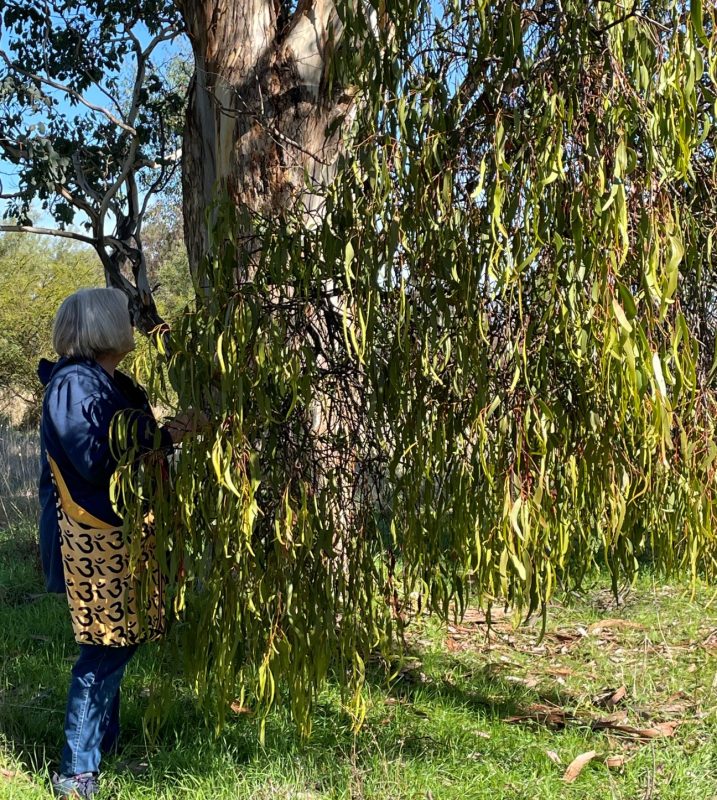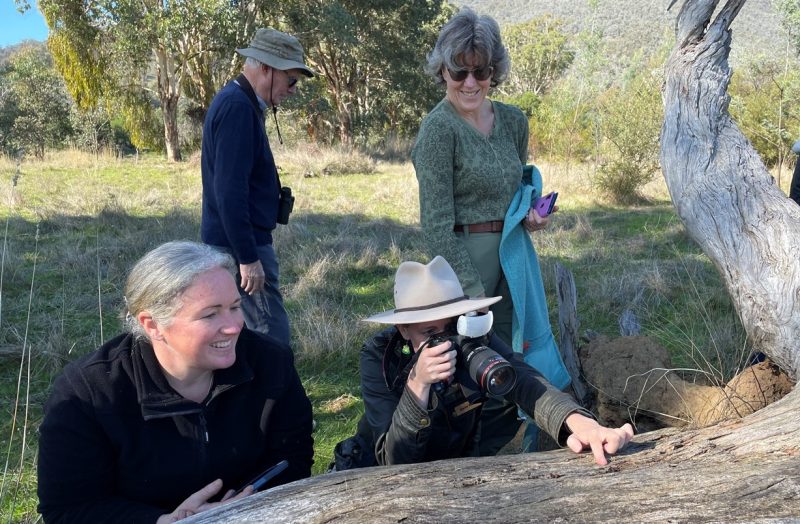Friends of the WREN Baranduda and other keen explorers of nature joined Karen Retra and Sue Brunskill in Baranduda’s environmental lands last week for a short but rich stroll to see what the bush is up to this autumn.
One of the many features of this slow walk was finding parasitic mistletoe growing on a different mistletoe species altogether, both on a Eucalyptus tree.
As Sue and Karen explained, these fellow travellers are in an Epiparasitic relationship, where one parasitic species is parasitized by another to which it is related. In this case the smaller Fleshy mistletoe (Amyema miraculosa) is growing on a very healthy Drooping mistletoe (A. pendula). This clever plant has adapted across Australia to parasitize different hosts depending on the conditions – here in temperate Box-gum woodlands it is found on two different host mistletoes.
Other highlights included seeing a wombat, hearing different frogs, learning how to add the native species we observed to iNaturalist, and actually adding 11 new sightings as we walked. Now that’s citizen science in action! See our sightings here. (#ParklandsSlowWalks)
Parklands acknowledge the support of the Victorian government for our Slow Walks program.








